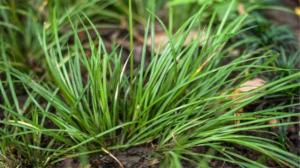How to Cage Beefsteak Tomato Plants
Beefsteak tomatoes are a popular type of tomato plant that produce large and juicy fruits. These plants require adequate support, especially when they start to grow taller and produce fruits. One of the most common techniques gardeners use for supporting beefsteak tomato plants is caging. In this article, we will discuss the step-by-step process of caging beefsteak tomato plants to help them grow and produce healthy fruits.
Step 1: Choose the Right Cage
The first step in caging your beefsteak tomato plants is to choose the right cage. A good cage should be sturdy enough to support the weight of the plant and its fruits. You can either buy a pre-made cage or create your own using wire mesh, wooden stakes, or bamboo poles. The cage should be at least 5 feet tall and 2 feet in diameter to allow enough space for the plant to grow.
Step 2: Plant the Tomato Seedling
Once you have your cage ready, it's time to plant your beefsteak tomato seedling. Dig a hole big enough to fit the root ball of the seedling, and then fill it with soil. Make sure the hole is deep enough to allow the plant to stand straight without leaning to one side. Gently tamp the soil around the base of the plant to give it stability, but do not compress the soil too much.
Step 3: Place the Cage Around the Plant
Once the plant is in place, carefully insert the cage into the soil around the plant. Make sure the cage is firmly embedded in the soil to prevent it from collapsing once the plant grows taller. You can also tie the cage to the plant stem using twine or wire to give it extra support.
Step 4: Train the Plant
As the plant starts to grow and spread out, it's important to train it to grow within the cage. Gently guide the branches through the holes in the cage to prevent them from bending or breaking. As the plant grows taller, you may need to adjust the cage or tie the plant to the cage to prevent it from falling over.
Step 5: Fertilize and Water the Plant
To ensure that your beefsteak tomato plant grows healthy and produces abundant fruits, you need to fertilize and water it regularly. Use a balanced fertilizer rich in nitrogen, phosphorus, and potassium to encourage strong growth and healthy fruits. Water the plant deeply and consistently, making sure the soil is moist but not waterlogged.
Step 6: Harvest the Fruits
As the plant starts to produce fruits, make sure to harvest them regularly to encourage continued fruiting. Gently twist the tomatoes off the vine once they are fully ripe, being careful not to damage the plant or the remaining fruits. Enjoy your juicy and flavorful beefsteak tomatoes in salads, sandwiches, or grilled dishes!
Conclusion
Caging is an effective and easy way to support your beefsteak tomato plants and ensure that they grow healthy and produce abundant fruits. By following the steps outlined in this article, you can successfully cage your tomato plants and enjoy a bountiful harvest. Happy gardening!

 how many times do yo...
how many times do yo... how many planted tre...
how many planted tre... how many pine trees ...
how many pine trees ... how many pecan trees...
how many pecan trees... how many plants comp...
how many plants comp... how many plants can ...
how many plants can ... how many plants and ...
how many plants and ... how many pepper plan...
how many pepper plan...































